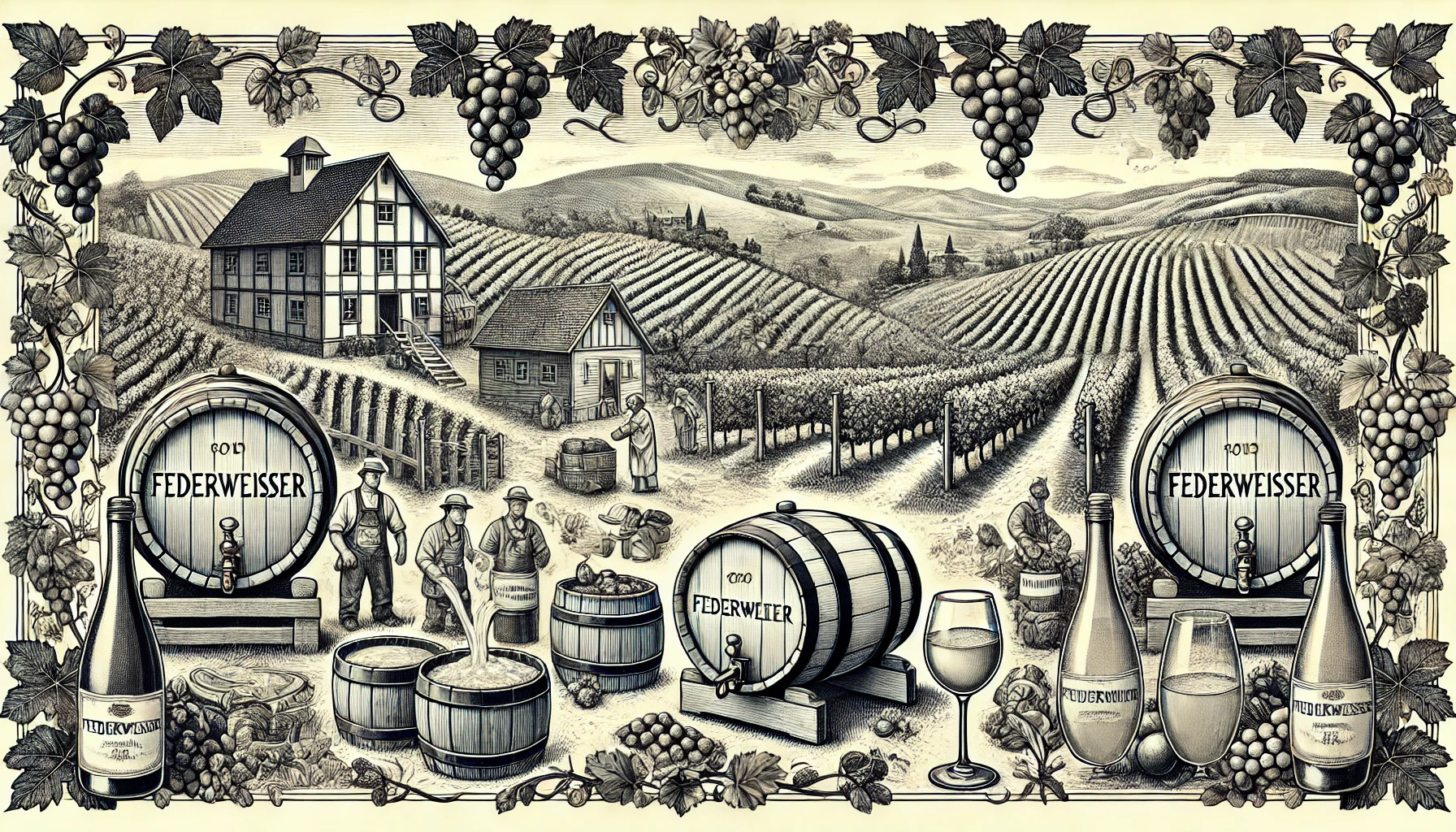
Federweisser is a young, partially fermented wine primarily made from white grapes like Riesling or Müller-Thurgau. This unique beverage is popular in Germany and is available only for a short time during the autumn months. Federweisser literally means “feather white,” referring to the cloudy appearance of the wine due to the suspended yeast particles still present during fermentation.
The production of Federweisser begins just after the grape harvest. The grapes are pressed, and the juice undergoes fermentation, but the process is stopped early. This is allowing for just a few days of fermentation before it’s bottled and sold. This early fermentation stage gives Federweisser its characteristic low alcohol content, usually ranging from 4 to 10%, depending on when it’s consumed.
One of the main attractions of Federweisser is its light, sweet taste. Since the wine is still fermenting, it retains a natural sweetness from the unfermented sugars, combined with a slight effervescence, which adds a refreshing quality. Federweisser must be handled with care due to ongoing fermentation, meaning it cannot be sealed tightly to avoid pressure buildup. This is why it’s sold with vented caps or loosely closed bottles.
Federweisser is traditionally enjoyed with hearty German dishes like Zwiebelkuchen (onion tart) or Flammkuchen (a type of thin crust pizza). Its refreshing acidity pairs well with savory foods, making it a favorite during the autumn harvest festivals.
The wine is best consumed fresh within a few days of purchase since it continues to ferment and its flavor changes rapidly. It’s a perfect representation of the seasonal and fleeting nature of wine in its earliest stages.
Curious about more wine terms and insights? Visit our Wine Wiki section and explore the basic wine terms for expert definitions and tips!